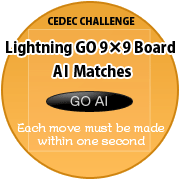TOP![]() Sessions
Sessions![]()
![]() Programming
Programming![]() This Session
This Session
Expected Skill | Game engine or rendering programmers, Technical Directors, and Technical Artists. |
|---|---|
Ideas Take Away | Physically correct usage of light energy in physically based rendering and related knowledge. |
In last year’s Imagire Day session entitled “Beyond a Glare Effect for HDR Rendering - Basics of Reflectance”, the importance of the physically accurate BRDF was discussed. However, unless incident light and reflected light at the shading pixel are physically dealt with, the “shading computation” can’t be said to be “physically correct.”
Therefore, this session will discuss how to make a lighting model
physically based including the light sources and various image sensors
(i.e. film, digital sensors, the human eye, etc).
Generally, in typical DCC tools, an “intensity” is used as a unit of a light source.
However, since it is a relative parameter, a physical quantity can’t be obtained with the unit. This session will begin using the Watt (W) as a physical unit to represent light quantity and discuss what kind of relationships exists between the typical units used for light sources such as: lux (lx) or luminance (lm), color temperature, and other physical units.
If the physically based BRDF model is already implemented in an engine and one uses physical quantities for light and the render target, one can assume that the image sensor receives physically correct light energy. If the energy can be converted to the correct RGB values for a TV monitor, the rendering result will become physically correct.
In this presentation, film will be used as an example to explain how
spectral domain processed amounts of physical light are converted to a final sRGB color space that is above normal RGB values. By properly using physical quantities of light, unlike traditional and simpler nonlinear tone mapping, the complex phenomenon of spectral color changing as it passes through an image sensor can be reproduced to some extent.
Furthermore, when performing global illumination or light scattering
simulations, physical properties can be used for light sources.
Artists can easily set those parameters by referring to realistic
values.
![]()
* The session contents are based on the information provided by the speakers.
-

Yoshiharu Gotanda
CEO / CTO
Research and Development Department.
tri-Ace, Inc.


